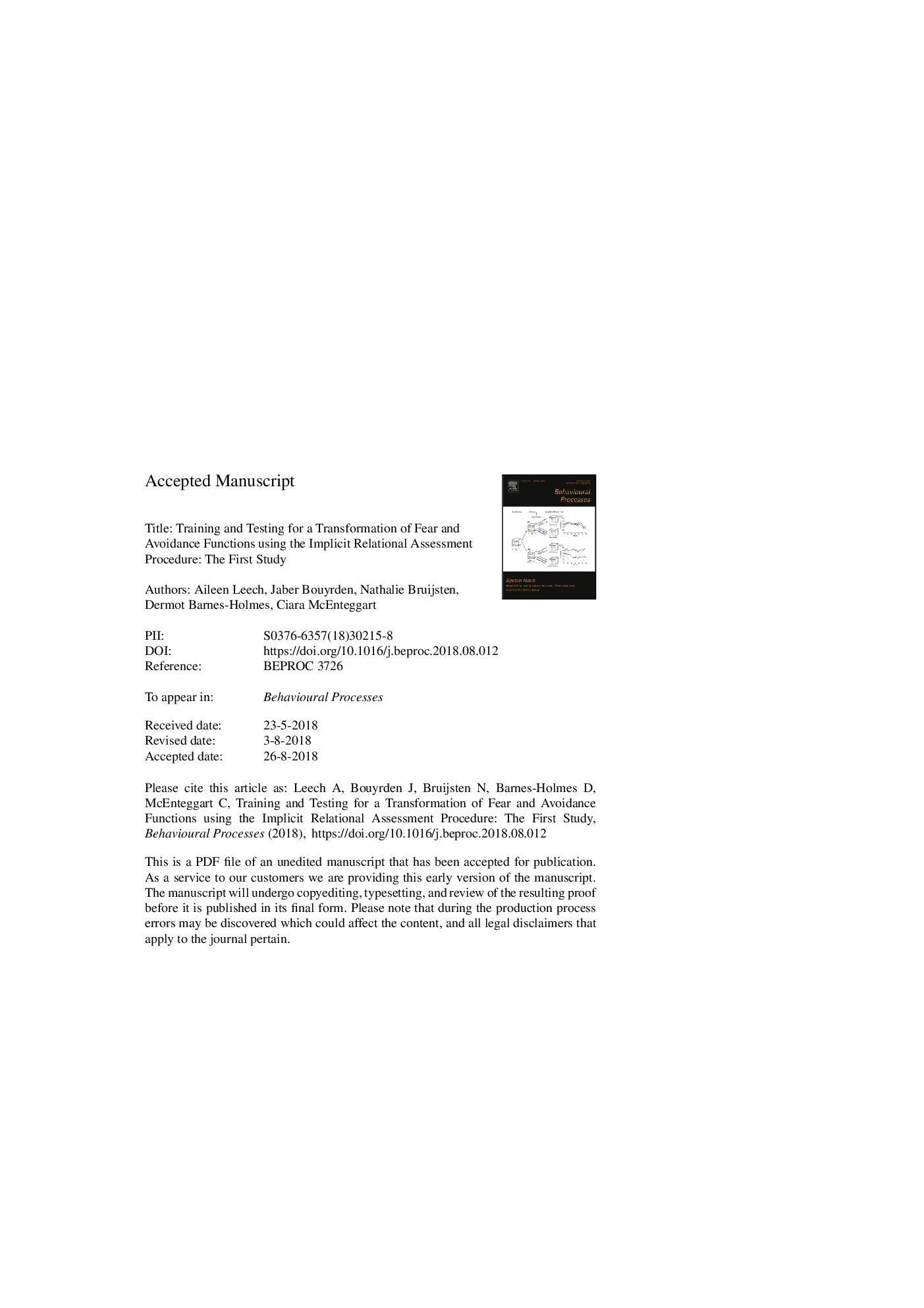| Article ID | Journal | Published Year | Pages | File Type |
|---|---|---|---|---|
| 10143140 | Behavioural Processes | 2018 | 43 Pages |
Abstract
Experiment 1 aimed to establish “fearful” and “pleasant” functions for arbitrary stimuli (geometric shapes) by relating those stimuli to pictures of spiders and pets using a training version of the Implicit Relational Assessment Procedure (IRAP). The transformation of these functions for the arbitrary stimuli was assessed by exposing participants to a 'traditional' version of the IRAP, the Fear-IRAP employed by Leech et al. (2016, 2017). A broadly similar pattern of response biases was recorded for the Fear-IRAP as had been observed in the previously published studies. Experiment 1 thus supported the assumed but untested assumption that the relational context provided by the IRAP may both serve to establish and reveal fear-related response biases in arbitrary stimuli. A second experiment attempted to replicate the effects observed in Experiment 1 but using pictures of 'unfamiliar' Australian marsupials as arbitrary stimuli. The pattern of results obtained in Experiment 2 failed to replicate the pattern observed in Experiment 1, or that reported in the previously published studies by Leech et al. Overall, the findings suggest a possibly important boundary condition for the IRAP as a training and/or testing context for establishing fear-related response biases for arbitrary stimuli.
Related Topics
Life Sciences
Agricultural and Biological Sciences
Animal Science and Zoology
Authors
Aileen Leech, Jaber Bouyrden, Nathalie Bruijsten, Dermot Barnes-Holmes, Ciara McEnteggart,
